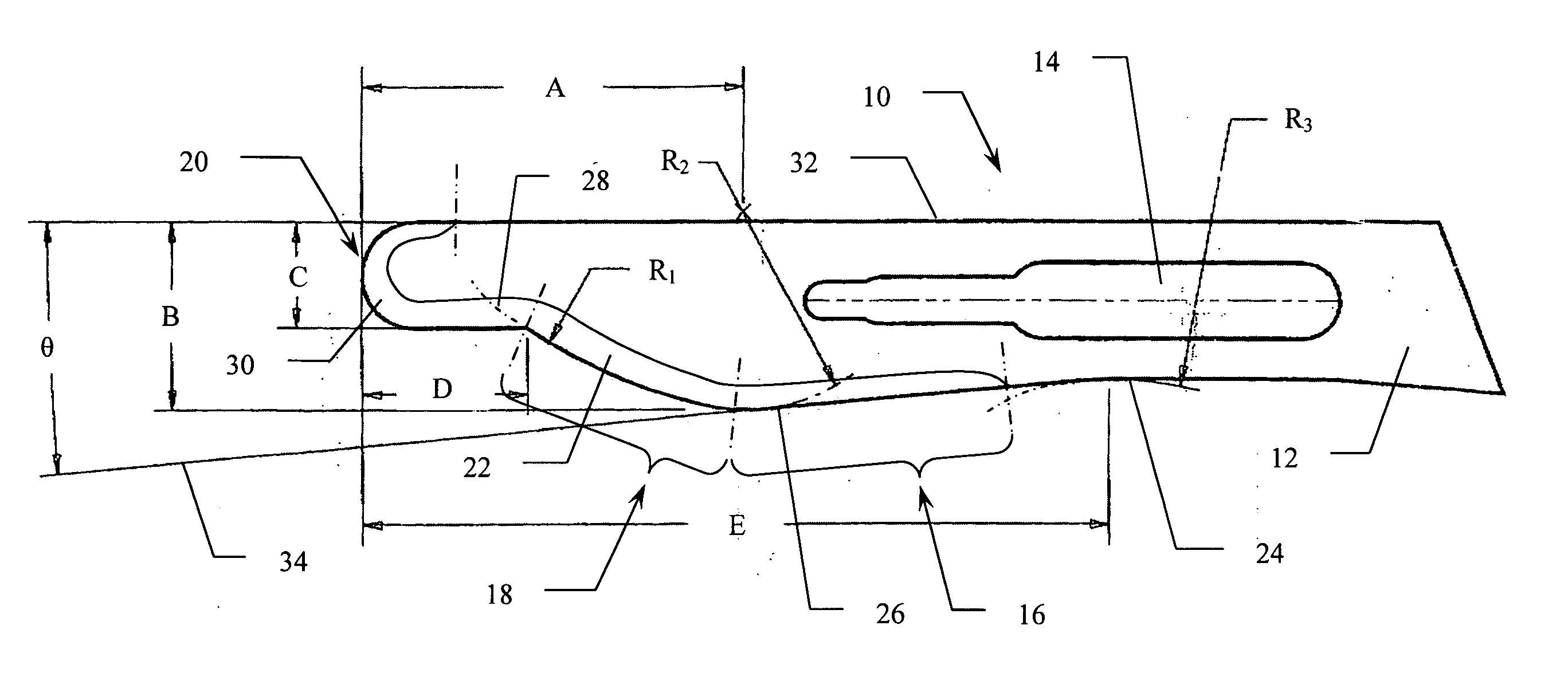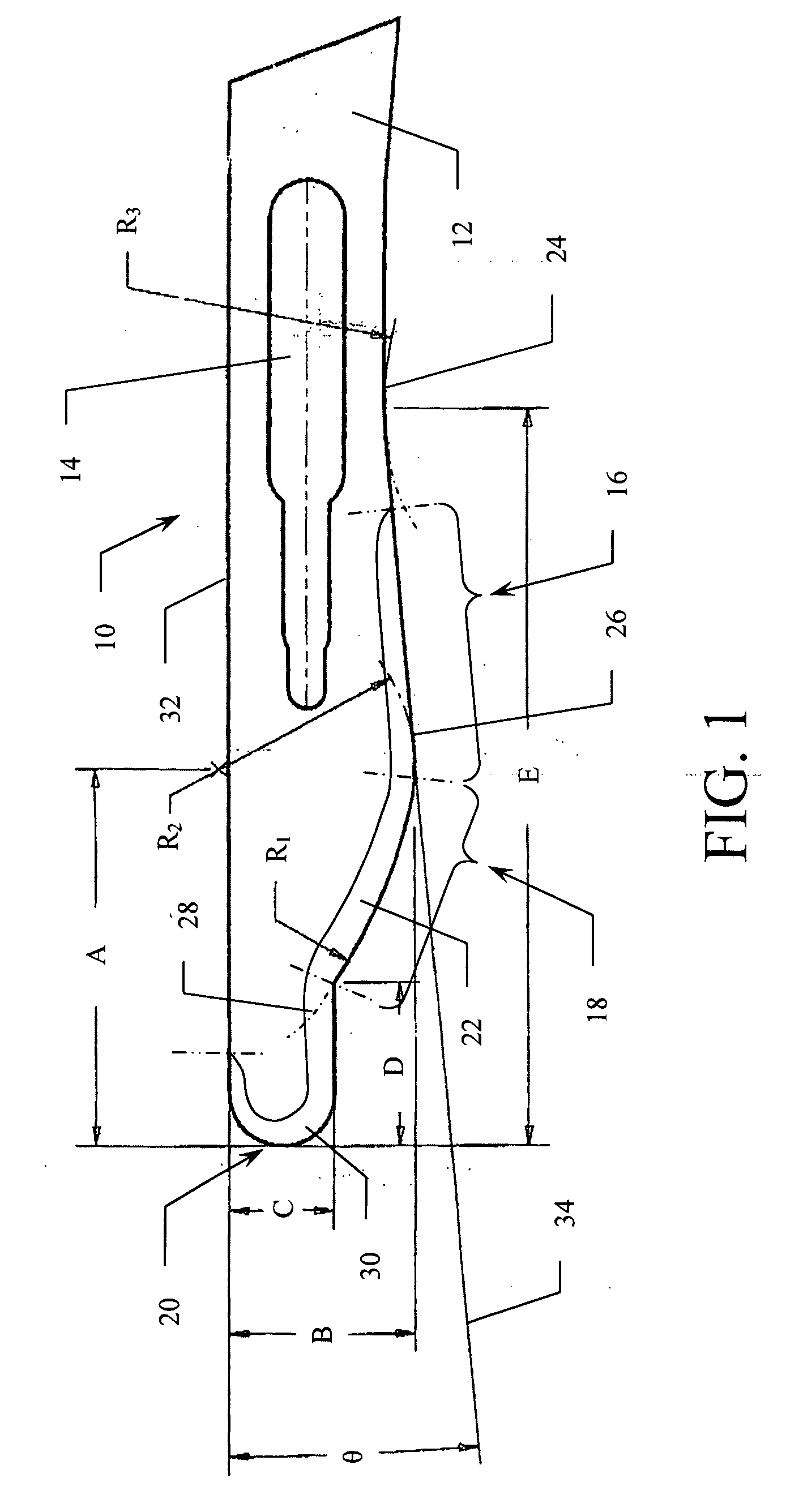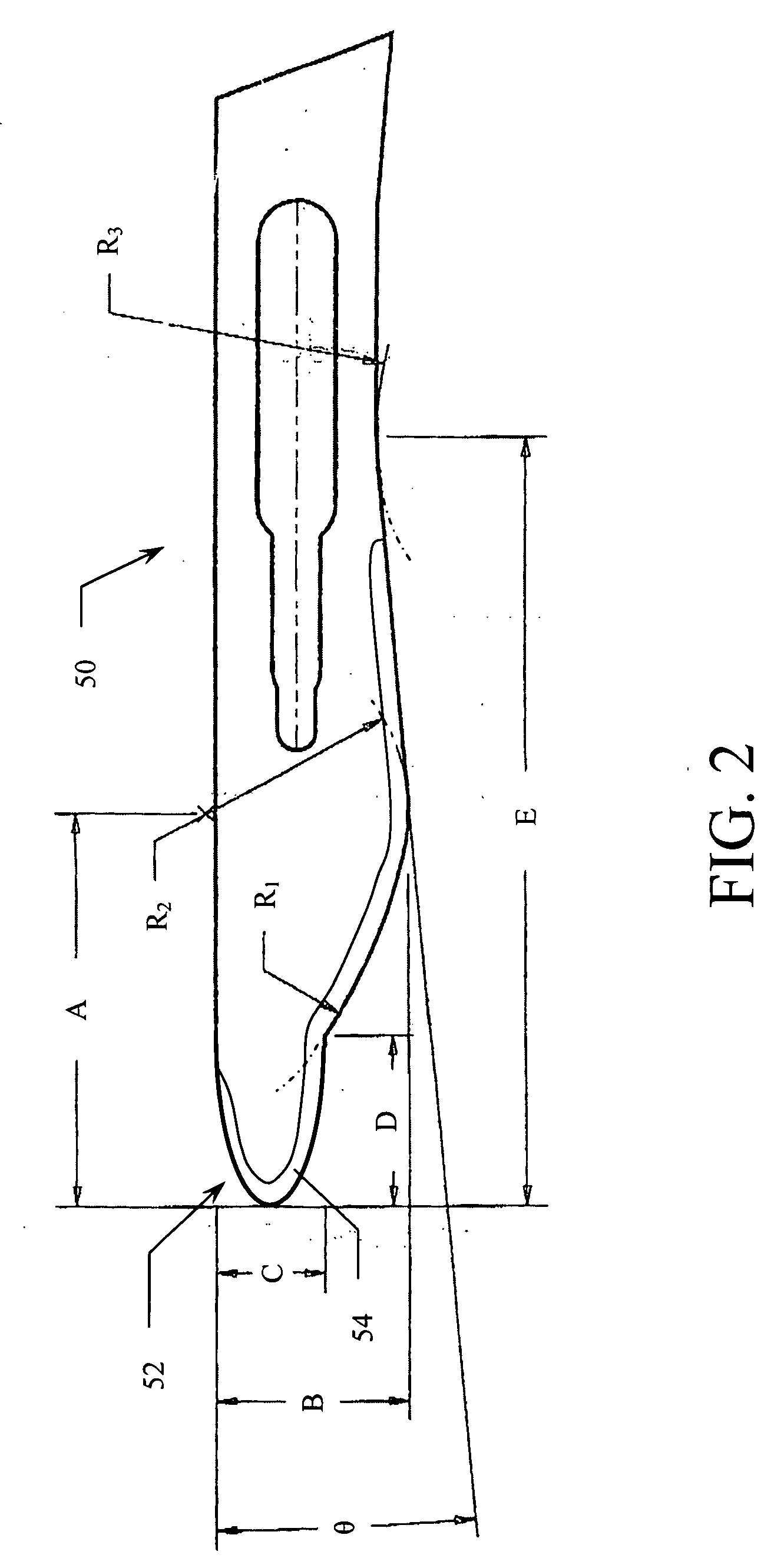Combination scalpel blade
a scalpel blade and combination technology, applied in the field of scalpel blades, can solve the problems of inconvenient replacement of blades, inconvenient use, sharp disposable blades, etc., and achieve the effect of optimum flexibility, efficiency and economy
- Summary
- Abstract
- Description
- Claims
- Application Information
AI Technical Summary
Benefits of technology
Problems solved by technology
Method used
Image
Examples
Embodiment Construction
[0020] Reference is made first to FIG. 1 for a detailed description of the structure and function of a scalpel blade according to the present invention. FIG. 1 illustrates a surgical scalpel blade 10 that includes a blade base 12 with a standard handle attachment slot 14. The combination blade 10 further includes a longitudinal cutting segment 16, a curved cutting segment 18, and an end tip cutting segment 20 positioned along the sharpened edge 22 of the blade. The structure of the blade is such that the three cutting surfaces are contiguous, with the longitudinal cutting segment 16 positioned next to the curved cutting segment 18 which is adjacent to the end tip cutting segment 20.
[0021] The blade base 12 transitions into the longitudinal cutting segment 16 through a short circular arc transition segment 24 having a radius R3 of approximately 0.5 inches in the preferred embodiment. The longitudinal cutting segment 16 comprises a straight section of cutting (sharpened) edge that is...
PUM
 Login to View More
Login to View More Abstract
Description
Claims
Application Information
 Login to View More
Login to View More - R&D
- Intellectual Property
- Life Sciences
- Materials
- Tech Scout
- Unparalleled Data Quality
- Higher Quality Content
- 60% Fewer Hallucinations
Browse by: Latest US Patents, China's latest patents, Technical Efficacy Thesaurus, Application Domain, Technology Topic, Popular Technical Reports.
© 2025 PatSnap. All rights reserved.Legal|Privacy policy|Modern Slavery Act Transparency Statement|Sitemap|About US| Contact US: help@patsnap.com



